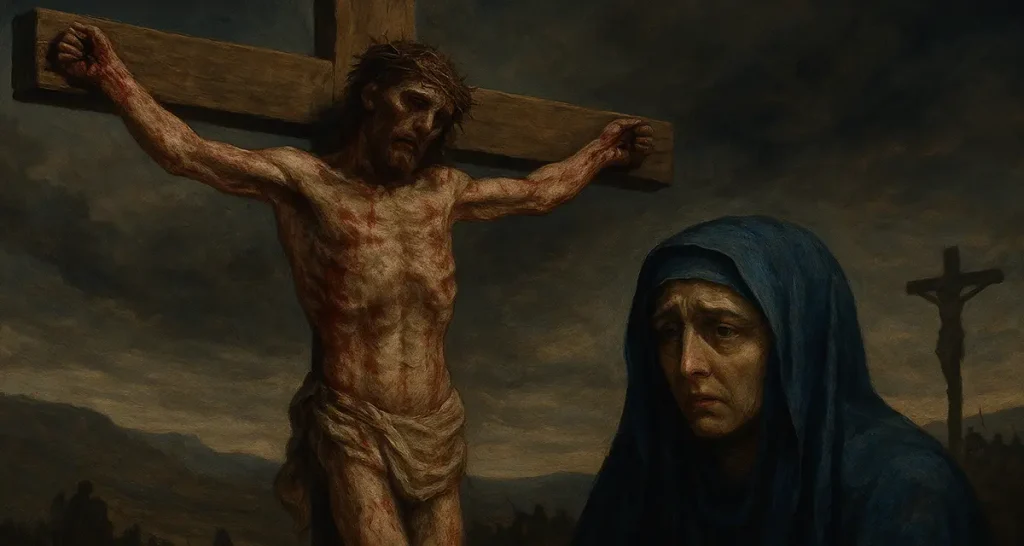Oh, this is such a rich and beautiful question! Let’s dive in and explore it together—not just from the prophetic angle, but from the deep theological heartbeat of it all. 🦴✨
🕊️ PROPHETIC FULFILLMENT: LET’S SET THE FOUNDATION
First things first, yes—the unbroken bones of Jesus fulfilled a powerful prophecy. But that’s just the tip of the iceberg!
- Psalm 34:20 says, “He protects all his bones; not one of them will be broken.”
- Exodus 12:46 and Numbers 9:12 both state that the bones of the Passover lamb must not be broken.
- John 19:36 connects this directly to Jesus: “These things happened so that the Scripture would be fulfilled: ‘Not one of his bones will be broken.’”
So Jesus, as the Lamb of God, aligns perfectly with the requirement of the Passover lamb. No broken bones = flawless, perfect sacrifice.
But now… let’s step beyond fulfillment and into the theological and cosmic depths of this unbrokenness.
💡 THEOLOGICAL WEIGHT: WHY UNBROKEN BONES MATTER IN SALVATION
1. Integrity of the Sacrifice
In the Old Testament, any animal used for sacrifice had to be without blemish or defect (Leviticus 22:20). Broken bones were seen as disfigurement. For Jesus, His physical integrity symbolized His spiritual perfection.
👉 Even under the brutality of the cross, His spiritual integrity—His sinlessness, His obedience, His surrender—remained unbroken. The unbroken bones are a sign of a completely intact offering.
2. The Symbol of the Body as the Temple
Jesus referred to His body as the temple (John 2:19–21). Now think: the bones are like the framework of a temple. If even one were shattered, the structure would be symbolically compromised.
But not in this case! The temple of His body was “torn” (His flesh, veil-like, was torn—Hebrews 10:20), yet the frame remained untouched. Meaning?
👉 The access to God was opened through a sacrifice, not destruction. The temple was not obliterated—it was fulfilled.
3. The Last Adam Remains Whole
Paul calls Jesus the Last Adam (1 Corinthians 15:45). In Eden, the first Adam’s body was put into a “deep sleep” so that from his side, a bride could be taken (Eve from his rib). On the cross, Jesus “sleeps” in death, and from His pierced side, blood and water pour out—a sign of birth and cleansing of the Church, His bride.
But! Adam’s bones weren’t broken to create Eve. Nor were Jesus’. Why?
👉 Because the life of the bride comes from the wounded but whole frame of the groom. There’s a beautiful parallel here of life birthed from a pierced-yet-unbroken vessel.
4. A Body Prepared for Eternal Priesthood
Hebrews 10:5 says, “A body You prepared for me.” Jesus’ body was not disposable—it was purposeful. And His priesthood is eternal, not temporary.
To enter into the heavenly tabernacle (Hebrews 9:11–12), Jesus, as the High Priest, brings His own blood—but the body must remain whole to symbolically enter in as the perfect priest and perfect offering.
👉 The unbroken bones declare: The priest lives! The Lamb lives! The sacrifice lives!
5. Victory Over Curse and Death
In Scripture, broken bones are often a metaphor for judgment, affliction, or inner collapse (Psalm 51:8, “Let the bones you have crushed rejoice”). The righteous suffer—but their bones are not broken (Psalm 34 again!).
So Jesus’ unbroken bones shout out:
🗣️ “He was crushed—but not defeated! He bore the curse without being cursed in His essence.”
👉 His bones stay whole to declare: The curse ends with Me. Death has no final victory here.
6. Foundation of a New Humanity
Bones form the structure of the human body. In Ezekiel’s valley of dry bones (Ezekiel 37), the bones come together—then flesh—then breath—and a new army rises.
Jesus, crucified but not shattered, becomes the foundation of a new humanity. The unbroken frame is like the cornerstone, the skeleton of resurrection hope.
👉 We are built into that Body, a new creation, not from ruins, but from wholeness redeemed through suffering.
✝️ FINAL THOUGHT: THE CROSS THAT BREAKS WITHOUT BREAKING
Here’s the divine mystery:
Jesus was pierced but not broken, crushed but not shattered, slain but not divided. Every wound was precise. Every detail—measured.
The bones of Jesus remained whole not because the soldiers forgot to break them, but because God remembered His promise.
And through His unbroken bones, He invites us into a wholeness that death cannot undo.


